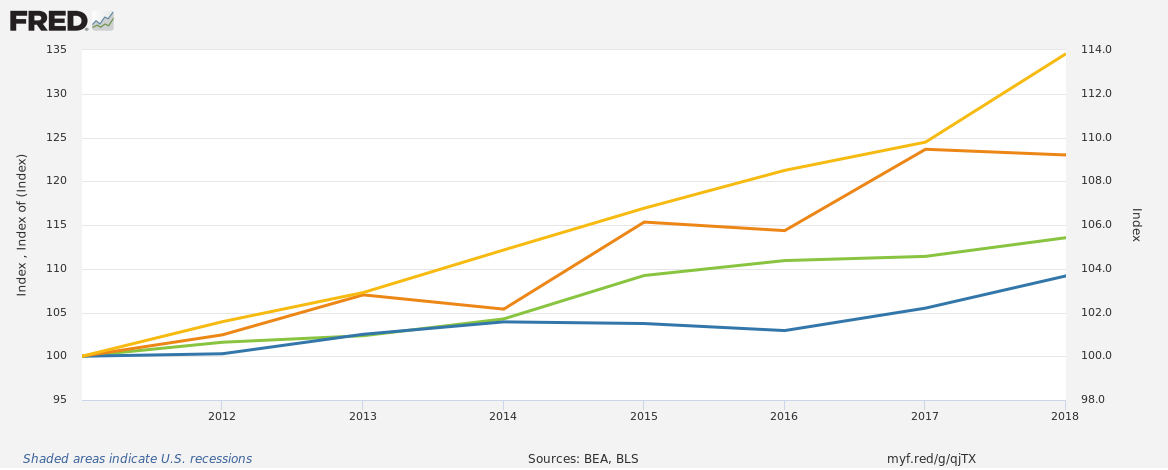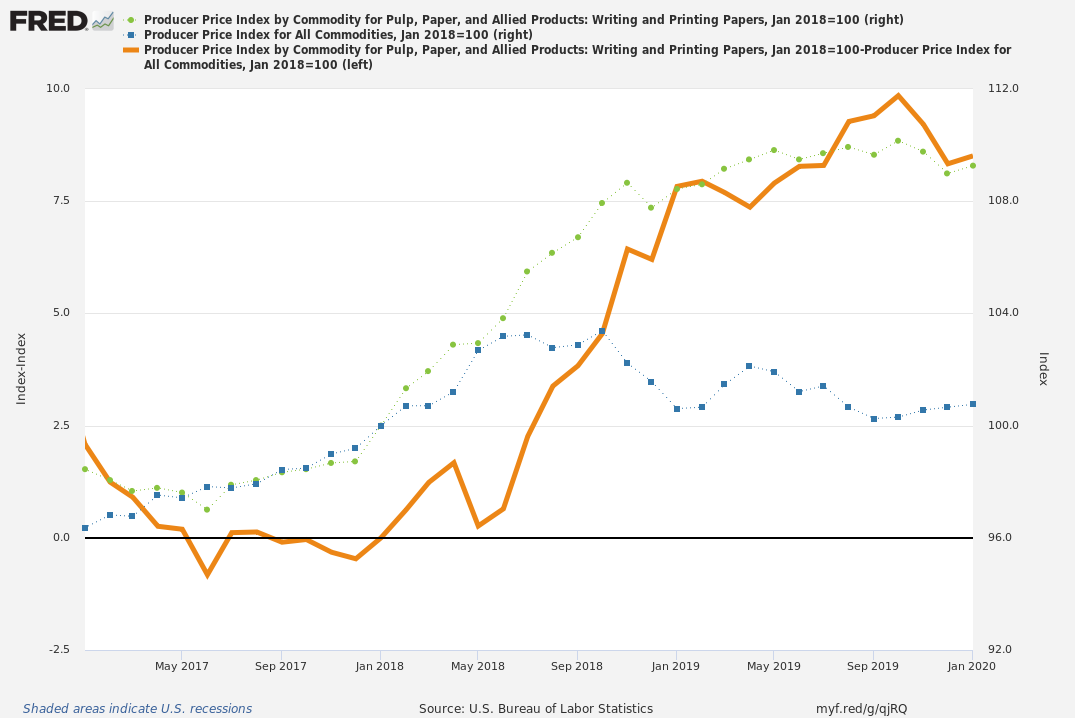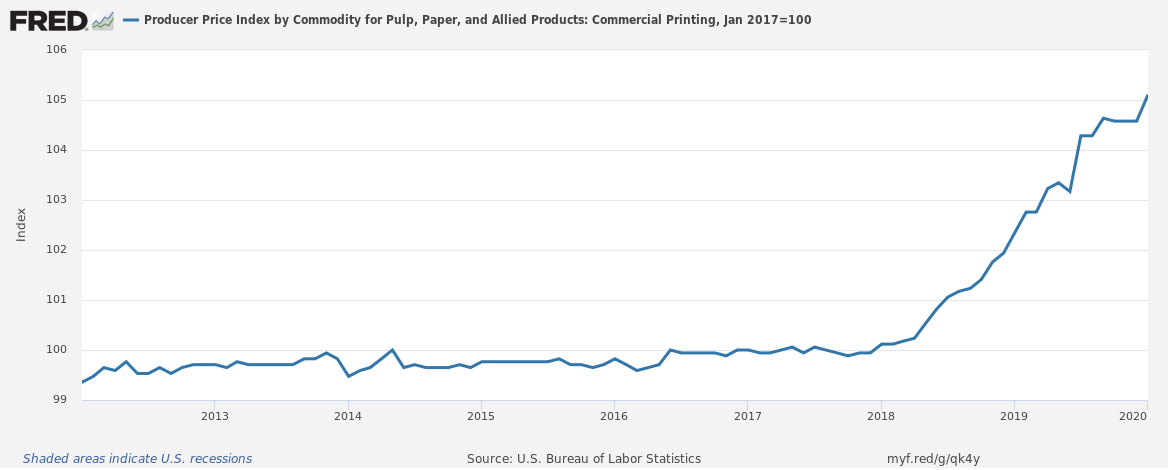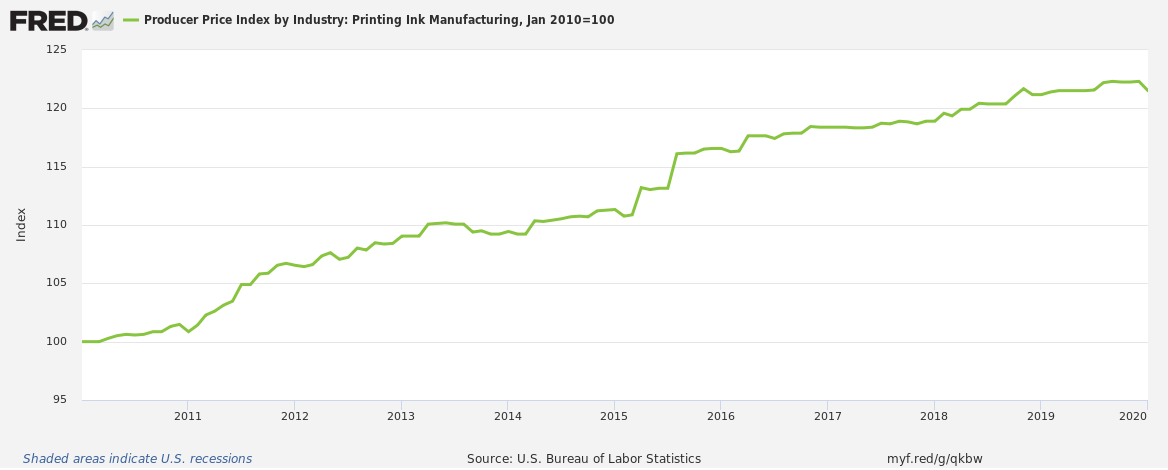If you’ve been keeping an eye on the price of printed products over the past few years, you’ve probably noticed incremental price increases across all print providers, Conquest Graphics included. While price increases are dreaded and undesirable to both print buyers and print providers alike, they are inevitable in such a rapidly changing and evolving industry as commercial printing.
Rising Production Costs for Commercial Printers
Increasing Production Prices for Printers

There are many moving parts at play in determining the price of print. To attempt to make sense of the bigger picture of print pricing, we’ve categorized these key components into three main categories: paper, pigment and people.
In the graph above, you can see some of the major price indices that represent the relative pricing of some of the most important supplies printers use in their business.
As the graph illustrates, the pricing for printing-grade paper, commercial printing ink and press operator wages have all been steadily increasing over the past three years. While some commercial printers have been able to absorb portions of these costs for short-term periods throughout the steady rising prices of their suppliers, there always comes a point at which a price increase is absolutely essential for the business to keep up the business of selling its printed products and services.
Changes to Paper Prices vs. All Other Commodities
Changes to Paper Prices vs. All Other Commodities

Printing requires a special grade of paper that is much finer than other industrial stocks like paperboard and kraft paper which are growing in popularity and demand as consumer preferences change. With the shift towards e-commerce came a shift towards shipping and logistics as the new method by which goods reach consumers.
Changes to Pricing of Commercial Printing Paper
Changes to Pricing of Commercial Printing Paper

Reacting to the changes in demand, paper mills began to retool with the machinery necessary to produce the relatively less refined stocks needed for constructing packaging and shipping containers.
Some mills shifted from producing some industrial and some printing paper to just producing industrial papers, resulting in huge supply deficits for printers that relied upon them for their paper.
As a result, many commercial printers lost their regional source for printing paper and had to ship stocks from much further away which resulted in an increase to their paper acquisition costs.
In addition to issues like these at our domestic paper mills, the imported paper market has also taken a huge hit as a result of the recent coronavirus outbreak in China. China is the top producer of paper worldwide, and some of their most critical paper-producing regions were recently shut down by the mandatory quarantine and lockdown of many of their industrial centers. This sudden drop off in paper productivity shocked the global markets and led to a sudden, significant paper price increase in the past few months.
Changes to Pricing of Printing Ink
Changes to Pricing of Printing Ink

The global disruption caused by the coronavirus lead to increasing prices and lower demands for many types of goods. Printing ink is another commodity that has been increasing in price slowly over the past few years. Very recently, the prices spiked even more because of global health concerns hurting business.
Printing ink also uses certain types of pigment that only China produces, and recently it's been discovered that there's a limited amount of that pigment that China plans to produce, leading to a big disruption on the chemicals market as printing ink manufacturers look elsewhere for raw materials to keep producing their ink in a way that keeps pace with demand.









